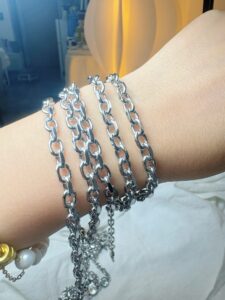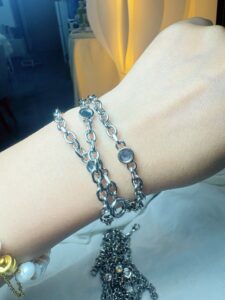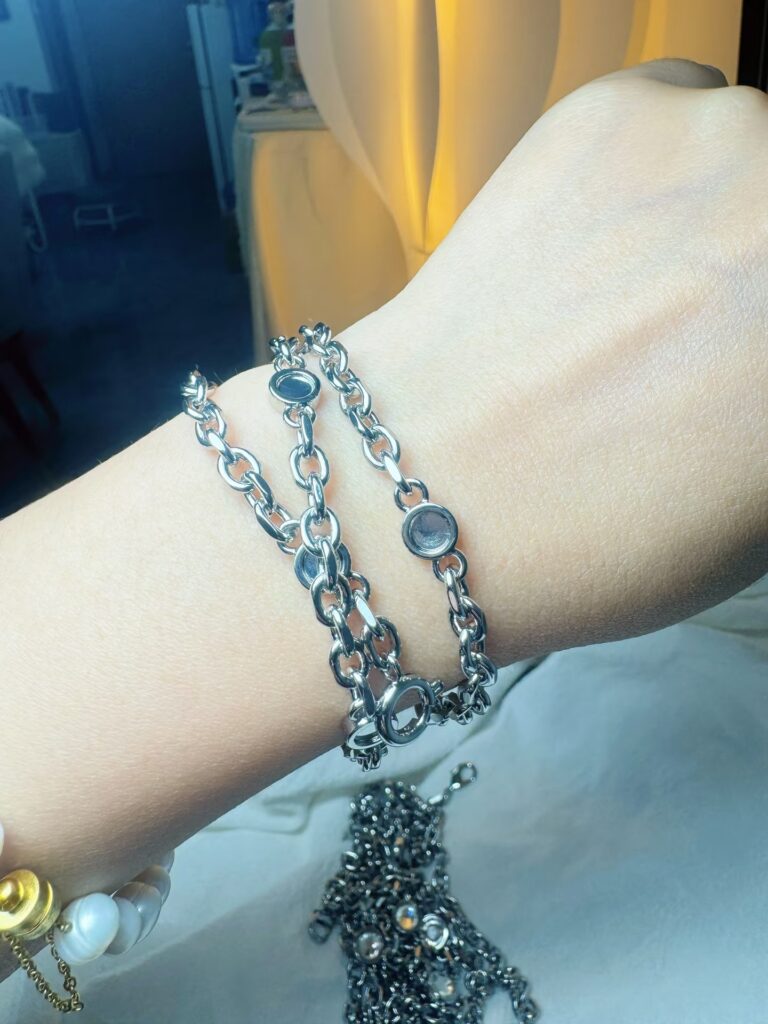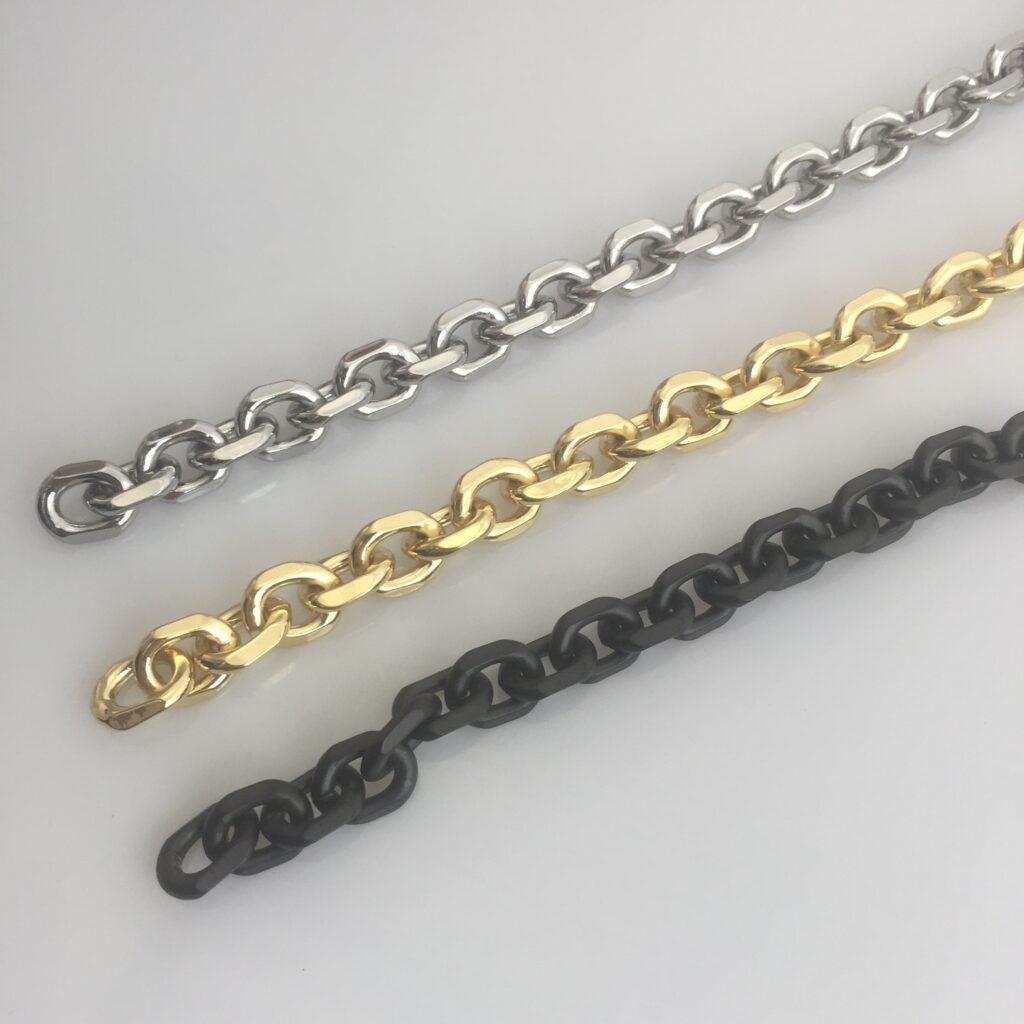In a luxury store in Tokyo’s Ginza district, a young woman compares two handbags. They have the same color scheme and are displayed in the showcase. When the sales consultant lightly flicks the chain of a bag, the sound of metal makes the customer’s eyes light up with interest. This quiet consumer scene shows the change happening in modern bag design. Chains are no longer just functional; they now define a bag’s character.
-
The Renaissance of Metal Chains

The evolution of bag chains is a microcosm of industrial civilization. In the 1950s, Dior first used aerospace-grade aluminum in bag design. This change freed metal chains from being just “handle substitutes.” When Karl Lagerfeld added a gold-plated chain to the Chanel 2.55 in 1983, it changed everything. This design made chains more decorative instead of just useful. It also started the trend of “hardcore aesthetics” in modern bag design.
Today’s designers have moved beyond material innovation to reinvent chains. Bottega Veneta’s Cloud Bag employs liquid metal casting technology, giving chains a mercury-like fluid texture. Prada uses titanium alloy and ceramic to make lightweight and strong links. Loewe uses 3D printing to copy medieval armor chains. This creates a nice mix of old and new styles.
-
Style Codes in the Morphological Revolution
Subtle variations in chain morphology are becoming visual DNA for brands. Saint Laurent’s prismatic chains exude the sleek modernity of urban life through geometric cuts. Bvlgari’s snake-like links show the sensuality of Italian jewelry. Fendi’s chunky hinge rings keep the architectural beauty of ancient Rome. These meticulously crafted metal curves are tangible expressions of brand ethos.
In styling, chains have become a stylist’s magic wand. A 12 mm-thick chain paired with an oversized blazer radiates power, while 3mm beaded chains shimmer against silk skirts. Matte-brushed chains temper the opulence of fur, and mirror-polished links electrify minimalist outfits. This macro impact of micro-accessories is rewriting the fundamental logic of fashion coordination.

-
III. Consumer Psychology in the Chain Economy
Luxury market research shows that chain design now affects buying choices more than before. It rose from 17% in 2015 to 39% in 2023. Consumers now use “chain personality theory” to express themselves. They choose precise mechanical chains to show rationality. Others prefer hand-hammered links to show artistic flair. Some select detachable multifunctional chains are shown to show practicality.
This behavioral shift has birthed new design philosophies. Hermès’ interchangeable chain system allows a single bag to transition seamlessly from boardroom to casual outings. Gucci worked with industrial designers to create smart magnetic chains. These chains serve as straps and GPS-enabled accessories. Such innovations blur the line between function and ornamentation, creating fresh consumption scenarios.
As sunlight shines on skyscrapers, the chains on urban women’s shoulders reflect many tiny lights. Each link looks like a carefully shaped character in a modern style manifesto. This is not just a decorative change. It is a movement for self-expression. In a time of standard production, people create unique styles using chains. Those undulating metal curves adorning shoulders are redefining contemporary identity through micro-aesthetics.



